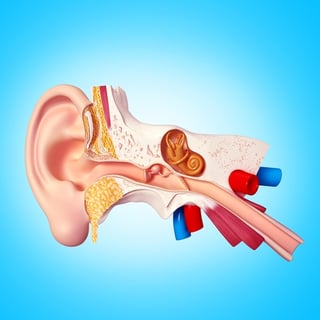Tympanoplasty is a surgical procedure that is carried out to reconstruct the perforated ear drum or the small bones located within the middle ear. The ear drum is the thin membrane located between the outer and middle ear that vibrates upon being hit by sound waves.

The procedure aims to enhance hearing amongst the patients or even to prevent the occurrence of frequent infections which show no improvement with other methods of treatment. If left ignored, the damaged eardrum or the middle ear bones can lead to total hearing loss or even increase the risk and severity of infections quite significantly.
Need for Tympanoplasty
The eardrum is a three-layered structure, with the outer and the inner layers consisting mainly of epithelium cells and the middle layer made up of elastic collagen fibres. Any defects in this middle layer can lead to the perforation of the ear drum. Even though small perforations heal spontaneously more severe ones generally require medical intervention and in many cases surgical treatment through.
The most common causes of occurrence of defects in the middle layer leading to perforation include the following:
- Chronic infections
- Constant insertion of objects into the ear
- Trauma caused by incidents such as a forceful slap on the ear or exposure to loud noise.
Recovery after the Surgery
The tympanoplasty procedure is performed under a local or general anaesthesia and the patents can normally return home on the same day of the surgery. Even though the tympanoplasty recovery in adults in relatively quick, they might experience the following issues for a few days after the procedure.
- A feeling of dizziness due to the after effects of anaesthesia
- Soreness and pain in the incisions made for the surgery
- Oozing of some bloody stuff from the ear canal and the incision
- Feeling of stuffiness or blockage in the ear for a few days
- Some difficultly with hearing
Tympanoplasty aftercare
In order to ensure the success of the procedure, it is important for the patients to follow the tympanopasty aftercare guidelines as provided by their doctor. These generally include the following:
- Preventing water to get into the ear by avoiding activities like swimming, scuba diving etc
- Avoiding blowing of the nose and other activities that can put pressure on the eardrum
- Avoiding performing any tasks that require heavy physical labour for at least two to three weeks
- Avoid sudden head movements and bending over for the first few days after the surgery.
Consuming proper medicine as prescribed by the doctor to prevent the occurrence of an infection.
To know more about tympanoplasty recovery consult with our ENT specialist.
Topic: ENT




.jpg)
.jpg)



Leave a comment